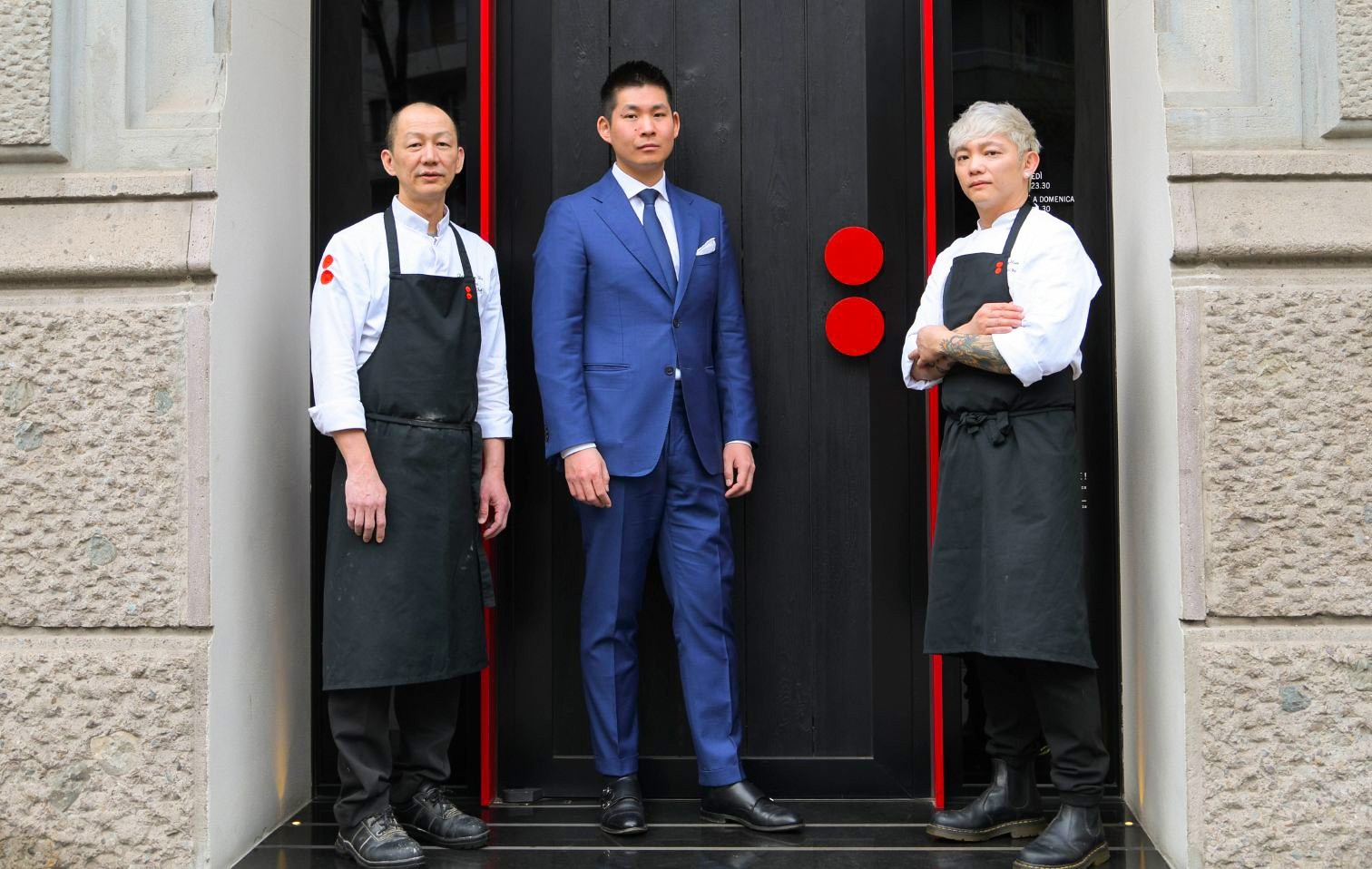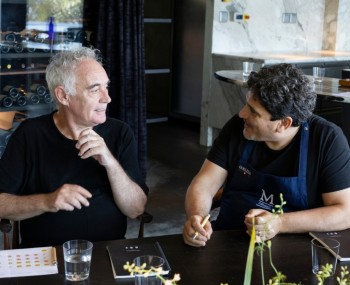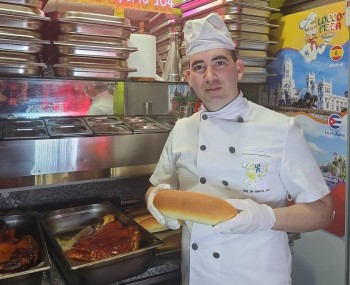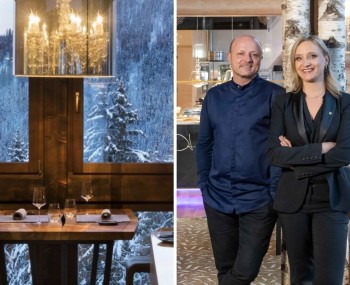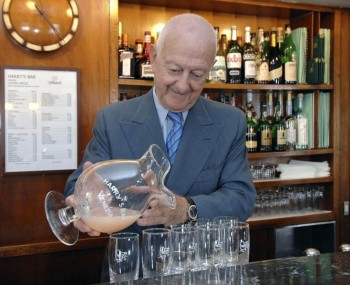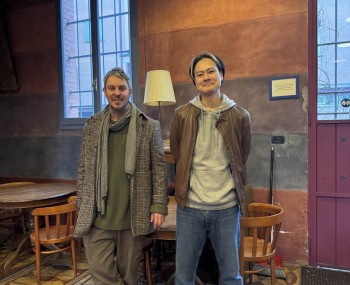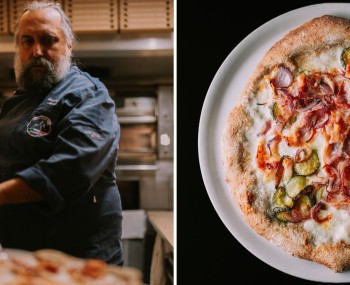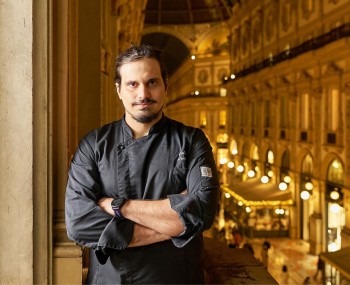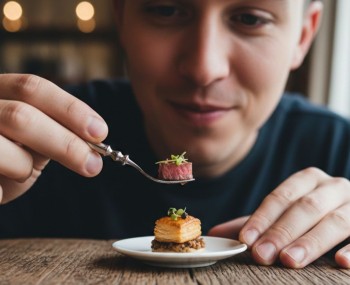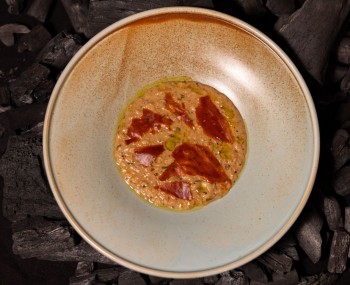Since 2011, Marco Liu's restaurant has been a landmark in the Lombard capital for those who want to savor authentic yet contemporary oriental cuisine, paired with typical Italian hospitality.
The restaurant: A Meeting of Generations and Cultures
Ba Restaurant, a contemporary and upscale Chinese restaurant, opened its doors in 2011, bringing authentic Cantonese cuisine to Milan, both traditional and contemporary. It doesn't shy away from occasional Western influences, whether in the ingredients used (from oysters to caviar, even foie gras) or in the presentation, which is both minimal and theatrical, sometimes using liquid nitrogen to create a cascade of vapor on the table.
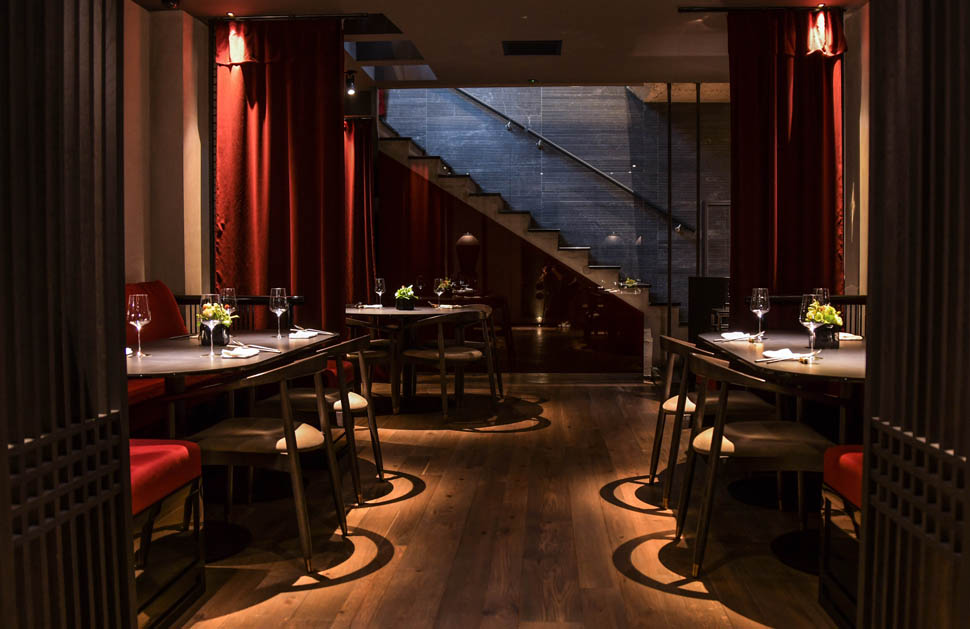
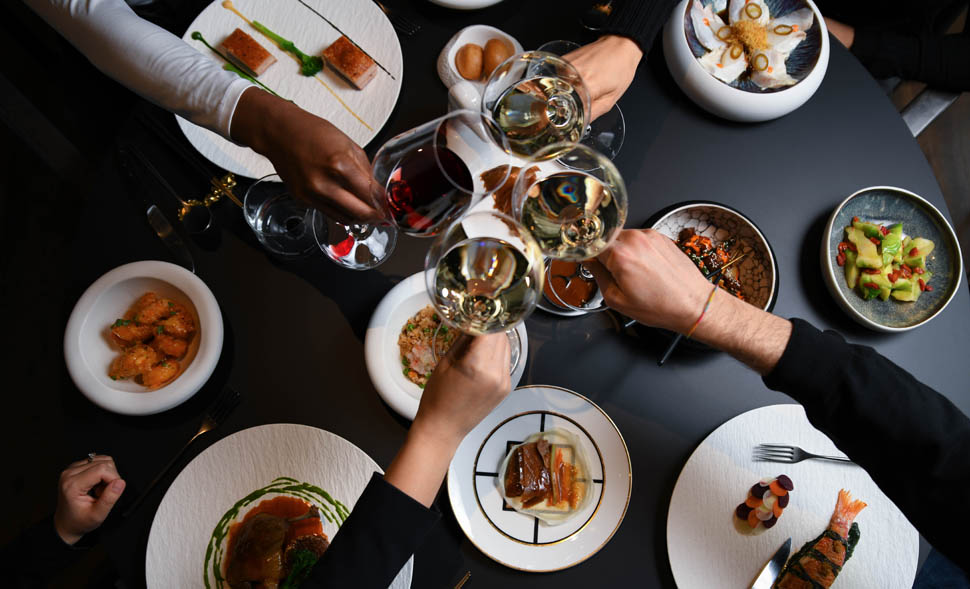
The name of the restaurant is a true manifesto and a dedication, based on the meanings of the word "Ba" First and foremost, in the Chinese language, this term denotes the number "eight," which in their culture belongs to primordial forces of the Universe (Heaven, Lake, Fire, Thunder, Wind, Water, Mountain, and Earth), holding all the answers to interpreting what happens in the world. It's a strongly positive symbol, evoking harmony, stability, and prosperity, as well as the starting point for every change.
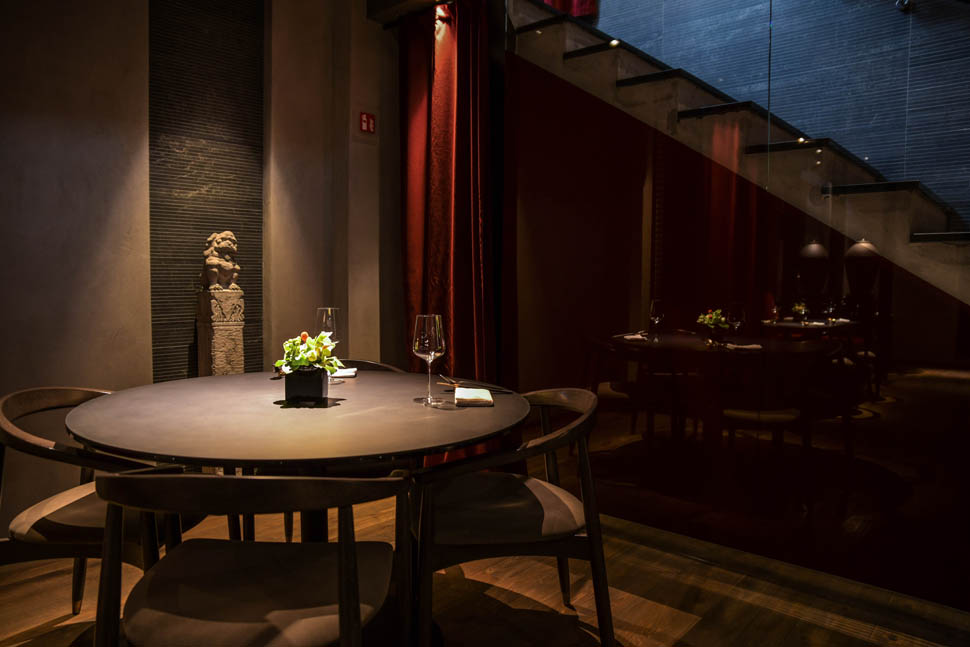
But "Ba" also means "father", understood as the origin of everything. By choosing the name of his restaurant, Marco Liu, a "second-generation" Chinese born in Italy and raised between Emilia and Milan, and the youngest of three brothers (all restaurateurs in Milan), wanted to not only express his balanced mix of Chinese chromosomes and Italian lifestyle (the perfect integration of two ancient cultures with much to say to each other) but also to thank the parent from whom he inherited teachings and learned professionalism and passion, which he reveals every day in his work.
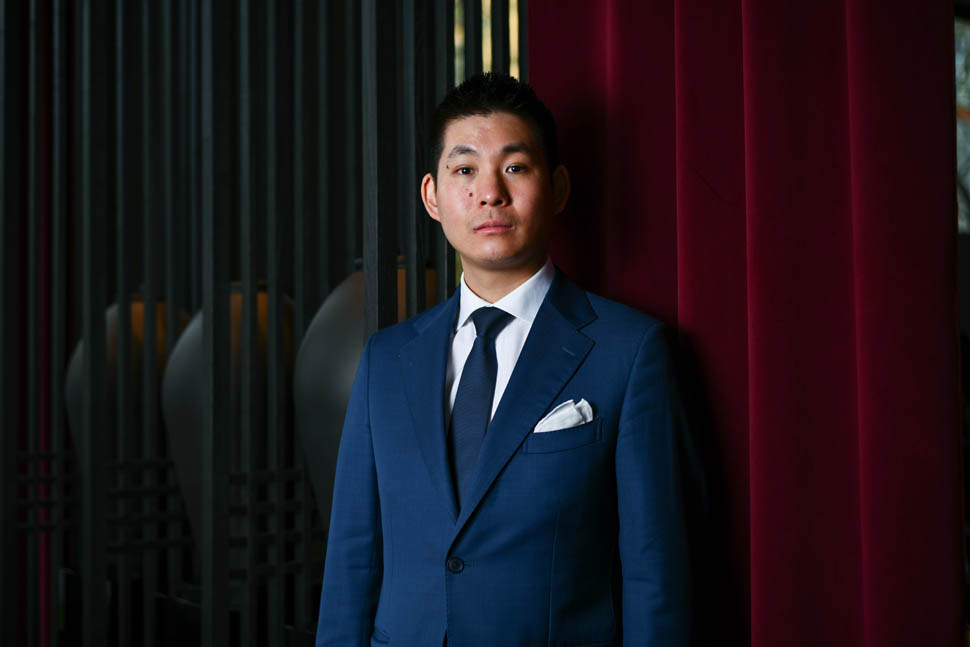
The cuisine: Traditional Chinese with a Strong Italian Modern Touch
Ba Restaurant carries a distinctly Chinese imprint, chosen by Marco Liu to dispel common misconceptions about the cuisine of his home country, fully conveying its gastronomic richness. However, everything is approached innovatively, evolved, and youthful, with the characteristic approach of a generation that wants to present the true face of modern China to its audience, marrying it with that of its adopted homeland through a focus on the quality of dishes, balance of flavors, typical Italian hospitality, and combining traditional techniques with innovative recipes.
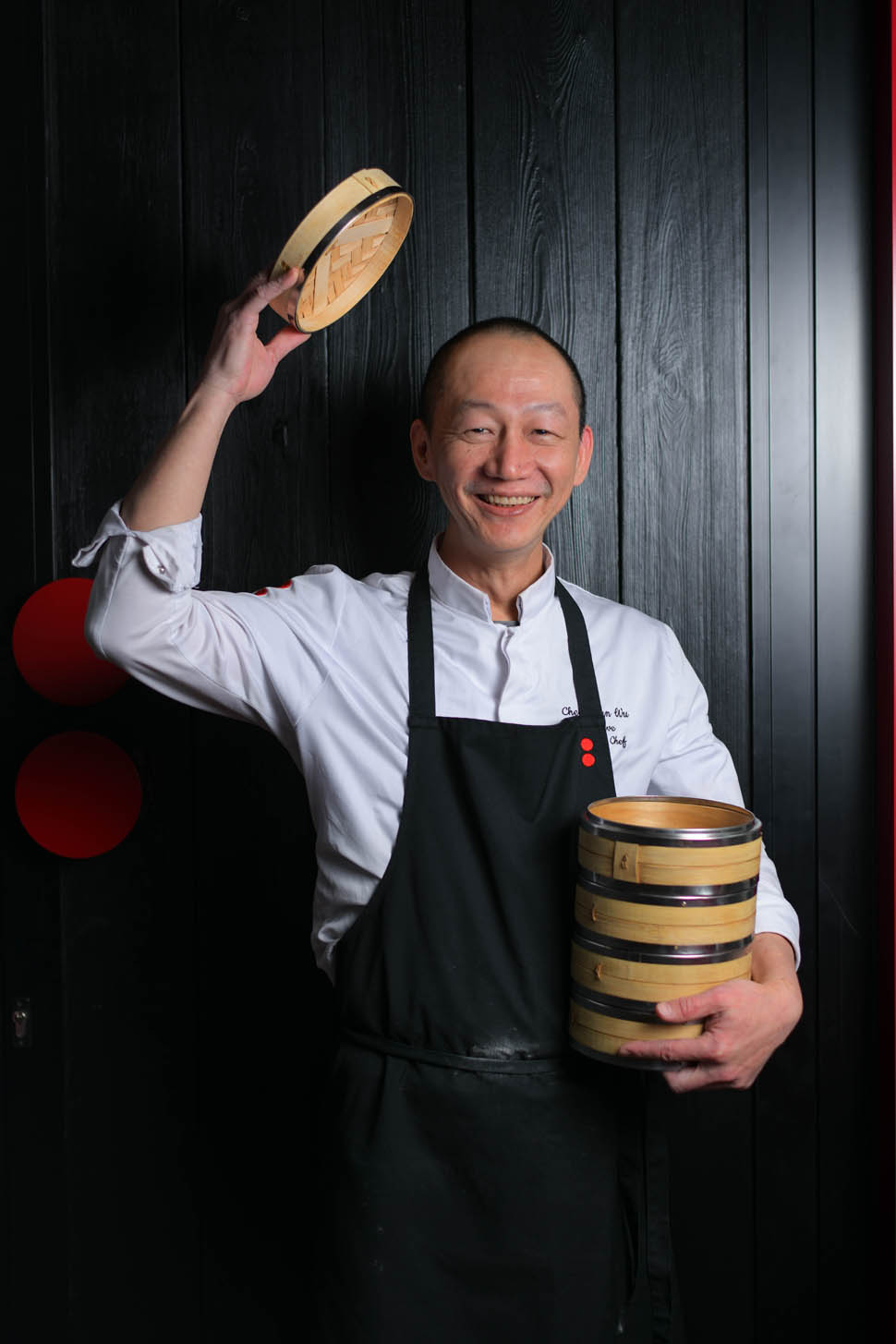
In all of this, Marco Liu is joined by executive chef Bryan Hooi (a Malaysian of Chinese origin who arrived at Ba in 2017 after numerous international experiences in kitchens around the world), Dim Sum Chef Wu Chee Kean, and sommelier Marco Spini. The goal of this team is to guide the customer in discovering one of the world's broadest culinary traditions through an essential, balanced, and aesthetically curated menu, offering the most representative recipes of Chinese cuisine but using ingredients familiar to the Western audience and interpreting them experimentally and accessible for everyone.
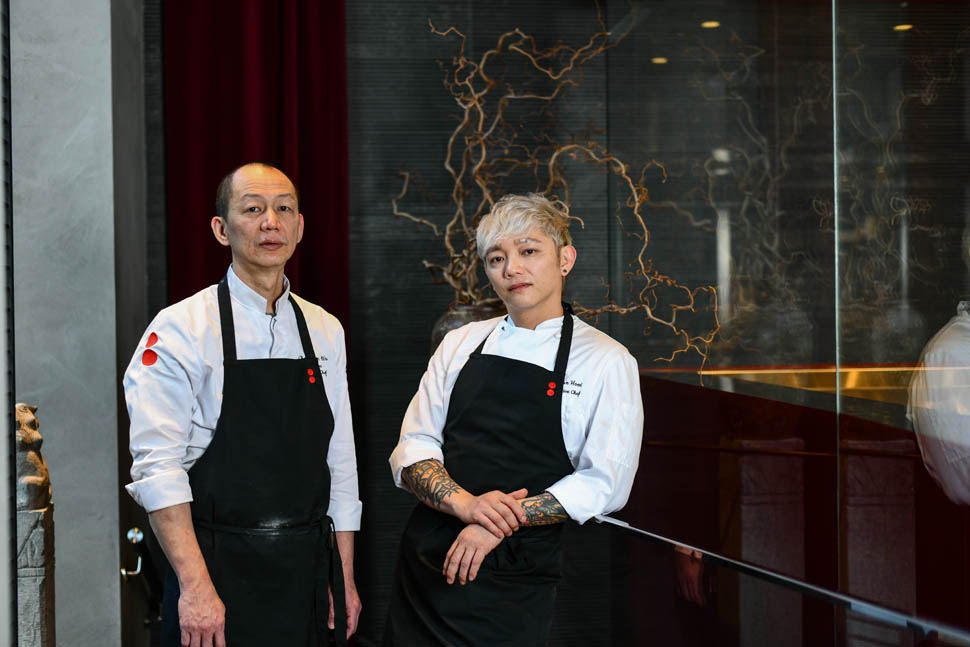
The menu featuring traditional recipes and innovative ideas
The menu, available à la carte or in an 8-courses tasting format, includes both "historic" and representative dishes of the most authentic Chinese cuisine (from the Northern Regions with their spicy and pungent flavors to the delicate flavors of the South), as well as always new recipes reflecting Marco Liu's contemporary culinary vision. These ideas and constant research and experimentation are brought to life by chefs Bryan Hooi and Wu Chee Kean. The goal is to combine traditional techniques with modern ones and to blend Chinese cuisine ingredients with those from nearby Italian producers to surprise the guest and continuously ignite new interest in Chinese cuisine.
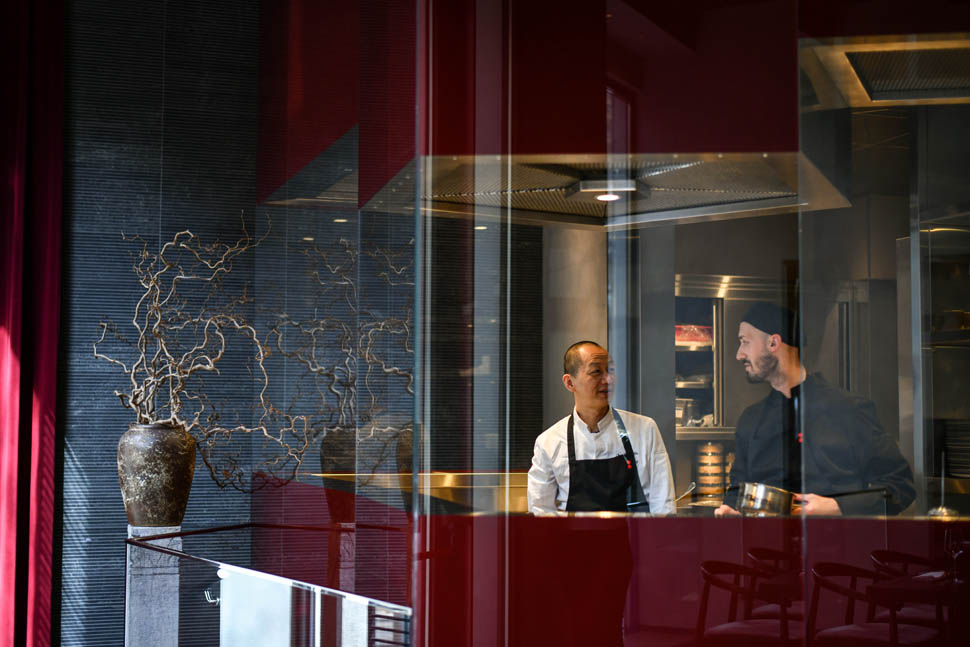
Notable among the entrées are Ozaki A5 Wagyu Carpaccio, served with miso and wasabi sauce, kumquat (Chinese mandarin), spring onion gel, and lime zest, as well as Foie Gras and Pear (a soft foie gras pâté glazed with cherry purée, accompanied by nashi pear compote and golden Chinese Mantou bun) and signature dishes like Sorlut Oysters with Kaluga Amur Caviar, soy pearls, vinegar, finger lime, and coriander gel, and the long-cooked Abalone with traditional broth reduction (chicken and ham), served with stuffed sticky rice Chinese Mantou and Kaluga Amur caviar.
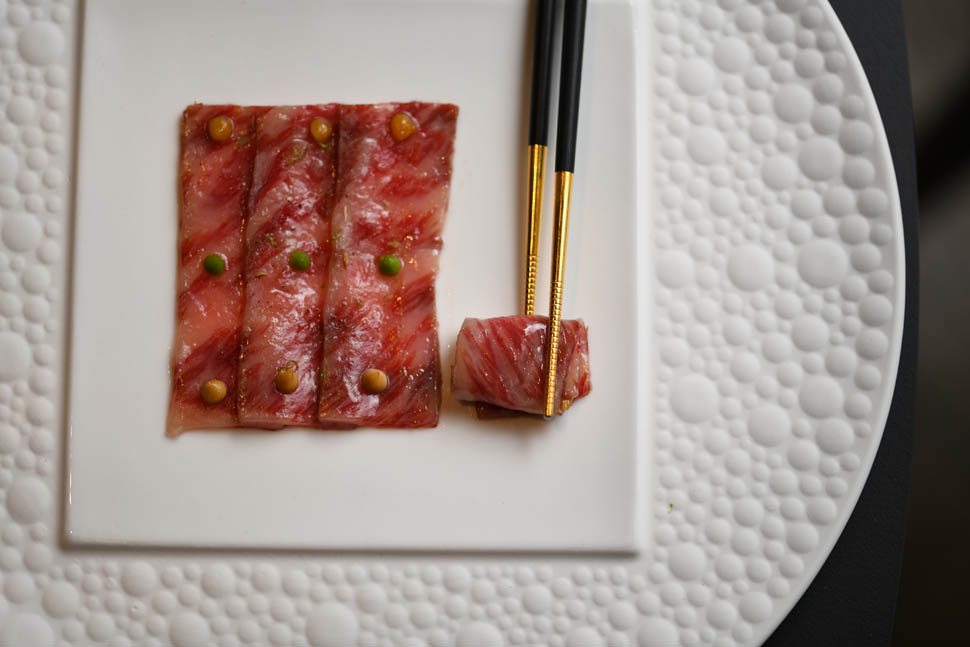
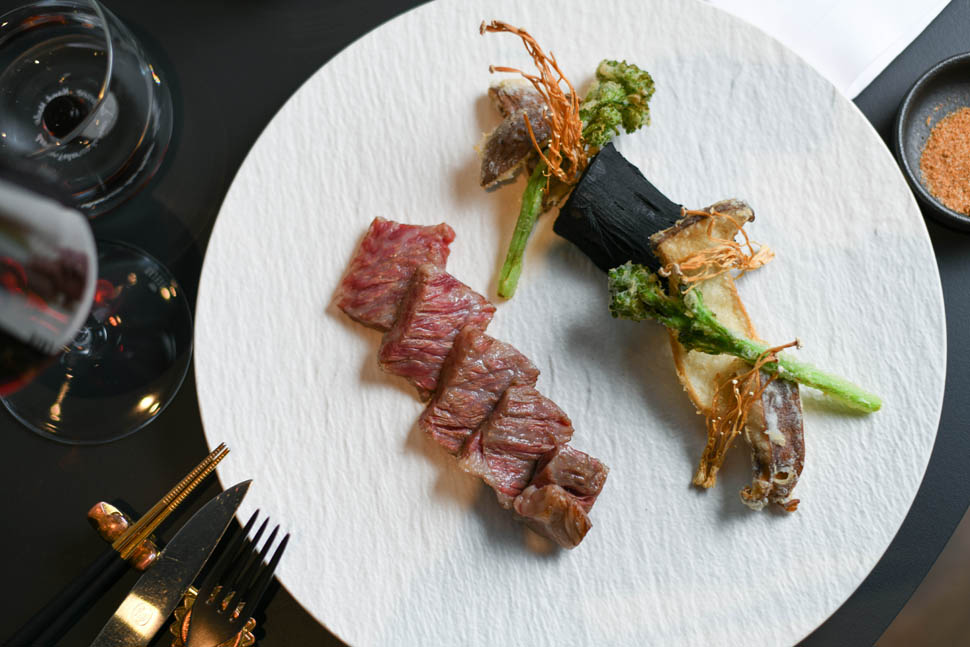
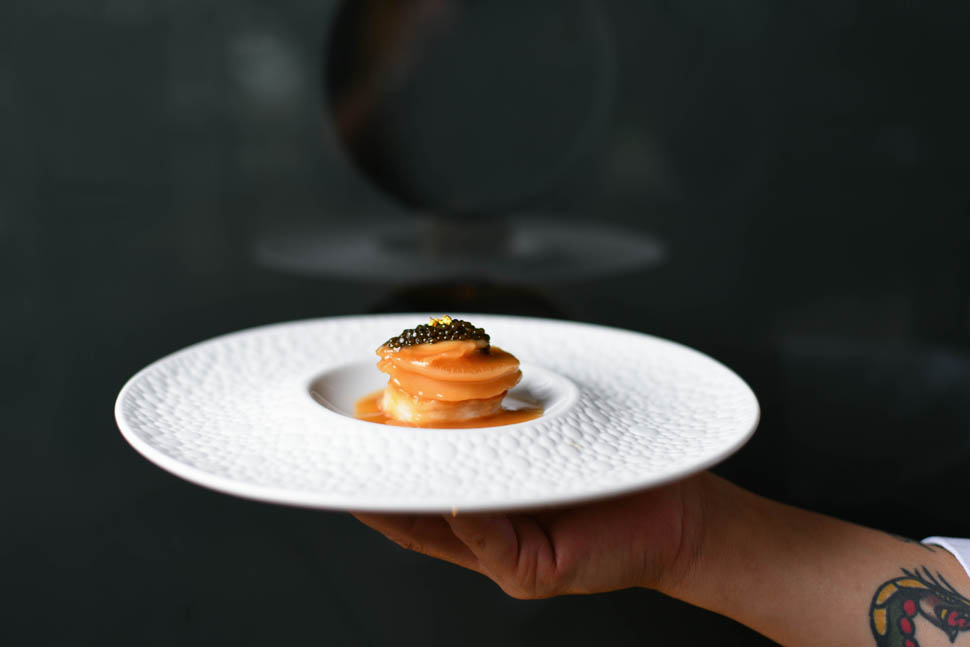
Among the main courses, standouts include Yangcong Mian (homemade trofie rice noodles sautéed with minced shrimp, red onions, and Colonnata lard), traditional summer Soybean Spaghetti with king crab dish (with tender king crab meat, asparagus, egg white, and Tobikko), and especially the extensive selection of Dim Sum (literally "small dishes that touch the heart"), representing one of the most beloved culinary traditions of Chinese cuisine and holding a place of honor on Ba's menu. They are crafted with new ingredients, colors, shapes, cooking methods, and techniques, and filled in many variations (from classic to seasonal vegetables with Chinese spinach extract to those filled with red beet extract, scallops, and black Tobikko; from those filled with black cod and garnished with black truffle, truffle cream, and orange Tobiko to those with spicy Sichuan Wanton filled with shrimp, chicken, shiitake mushrooms, and served with spicy Sichuan sauce, to Salmon and Wasabi dumplings with golden shades, to squid ink dumplings filled with salmon and wasabi and garnished with fresh wasabi, salmon roe, and scorched sauce, and those filled with Wagyu A5, steamed and then grilled).
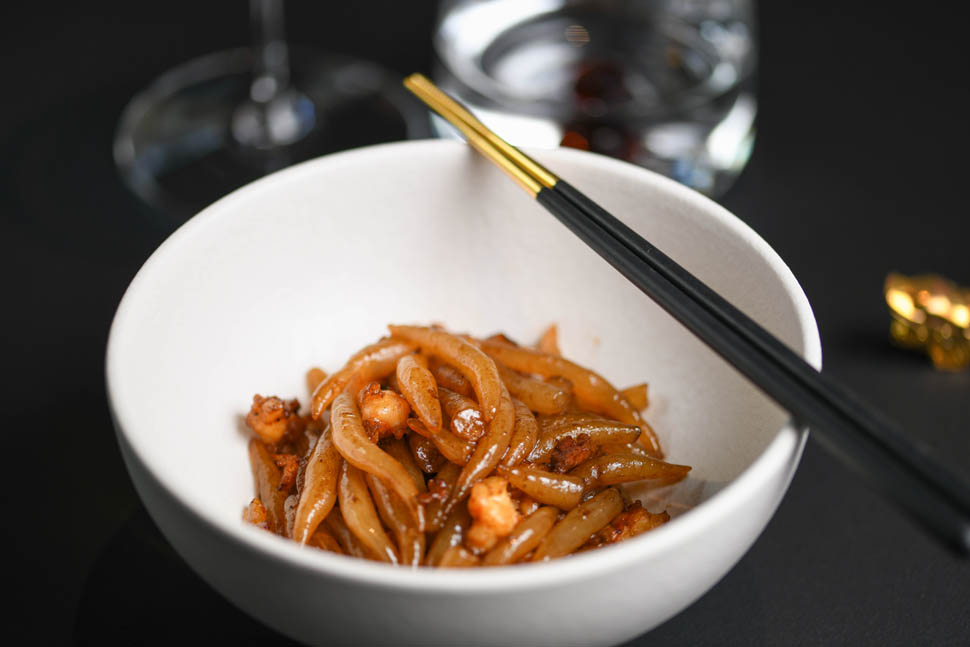
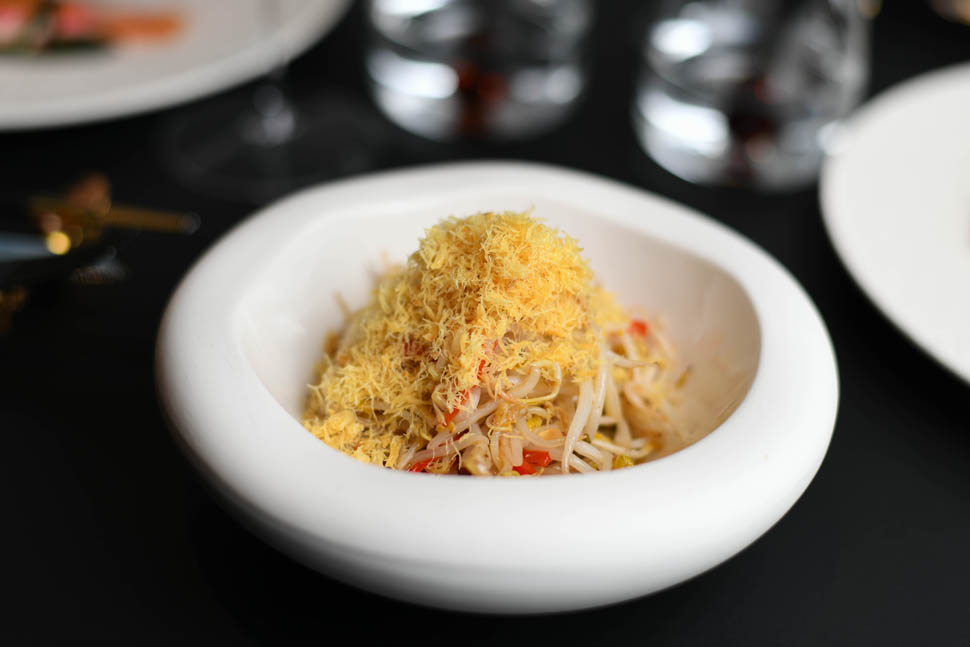
Notable among the "stuffed" recipes are Bao (soft steamed wheat flour buns): the famous Xiao Long Bao filled with pork meatball and its broth, Curry Pig Bao filled with curry pork, and made crispy on the grill, those with caramelized pork belly, and the "Foie Gras'' version (with foie gras, pork, and broth). The menu continues with fish dishes like Red Mullet zhongguo ganlan, with Chinese olive leaf cream, edamame purée, daikon, and sweet and sour turnip, Fried Shrimp with spicy mayo.
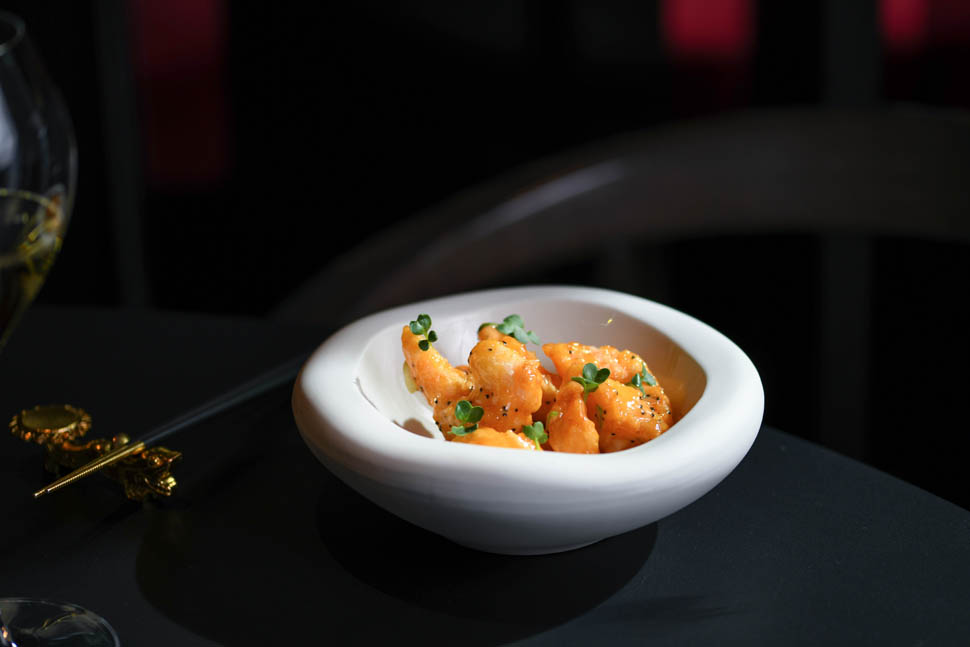
La Xiang You Yu (a dish with various textures, including soft Mediterranean calamari, crispy Sichuan pepper tentacles, okra sautéed with "crispy" Lao Gan Ma chili sauce, and rice vinegar pearls), Lajiao ruan ke xie (fried soft-shell crab, intense and very spicy, with a base of Singapore chili sauce with tomatoes, hazelnuts, jalapeño, galangal, lime, accompanied by Mantou, a crispy Chinese bun), and the perfect fusion of Italy and China represented by Red Shrimp from Mazara del Vallo with coconut cream, salted egg yolk, brine, curry leaves, soft coconut crumble, and candied lime. Finally, there is also a raw seafood dish: Citrus Salmon with soy sauce and lime, lime zest, and passion fruit.
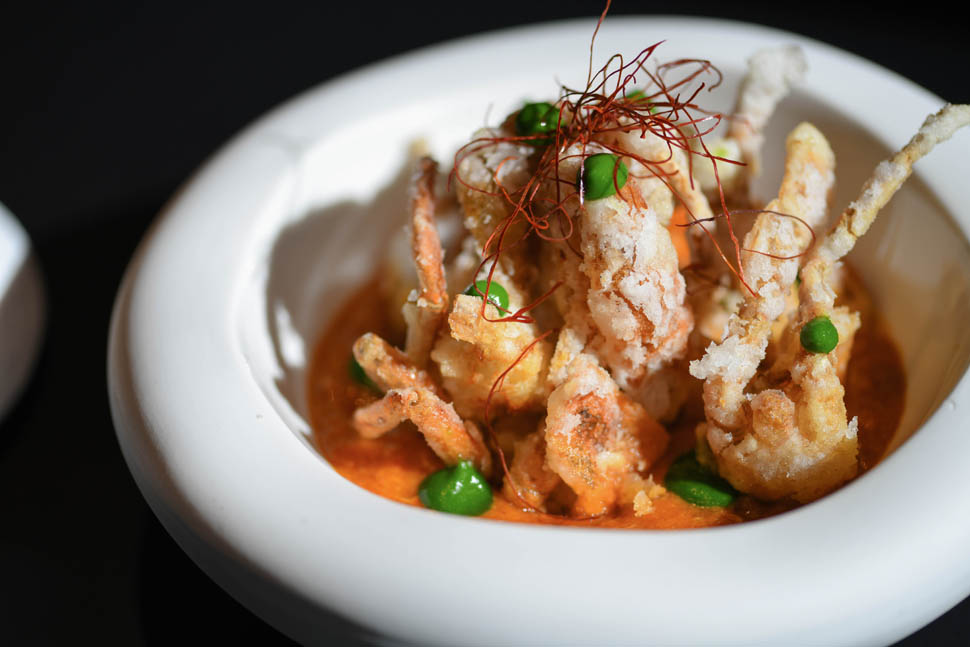
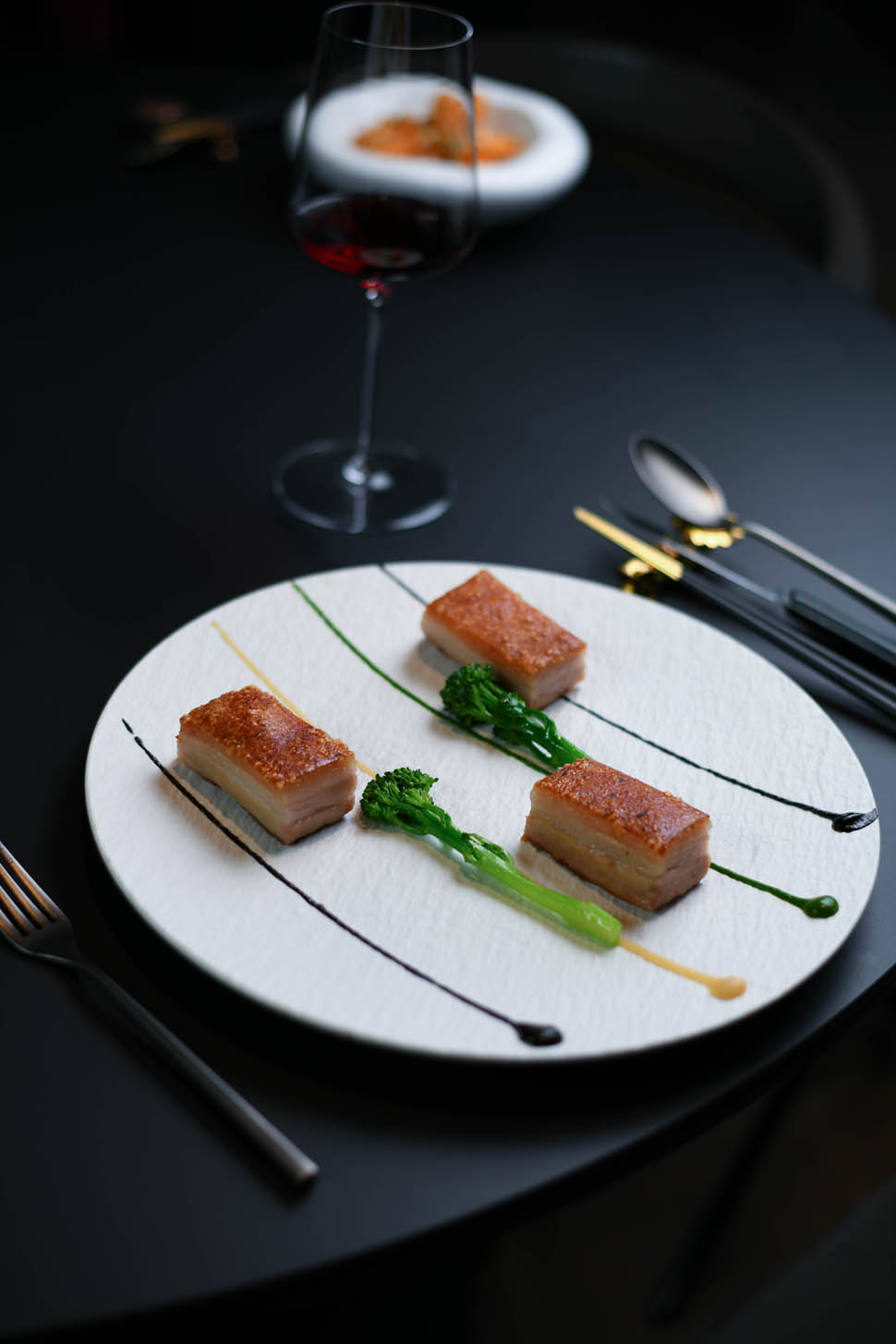
For those who prefer meat, there is Cui Pi Zhu Rou (crispy suckling pig belly with black garlic sauce and apple compote) and Char siu paigu (oven-baked pork ribs, caramelized on the grill, and smoked with Longjing tea), as well as Nuomi ya (duck leg with sticky rice and duck jus), Dadolata di manzo (Canadian Black Angus wok-fried with honey soy sauce and vegetables), and Entraña Black Pepper (barbecue Angus with Sarawak black pepper sauce, pak choi, and crispy leek rings).
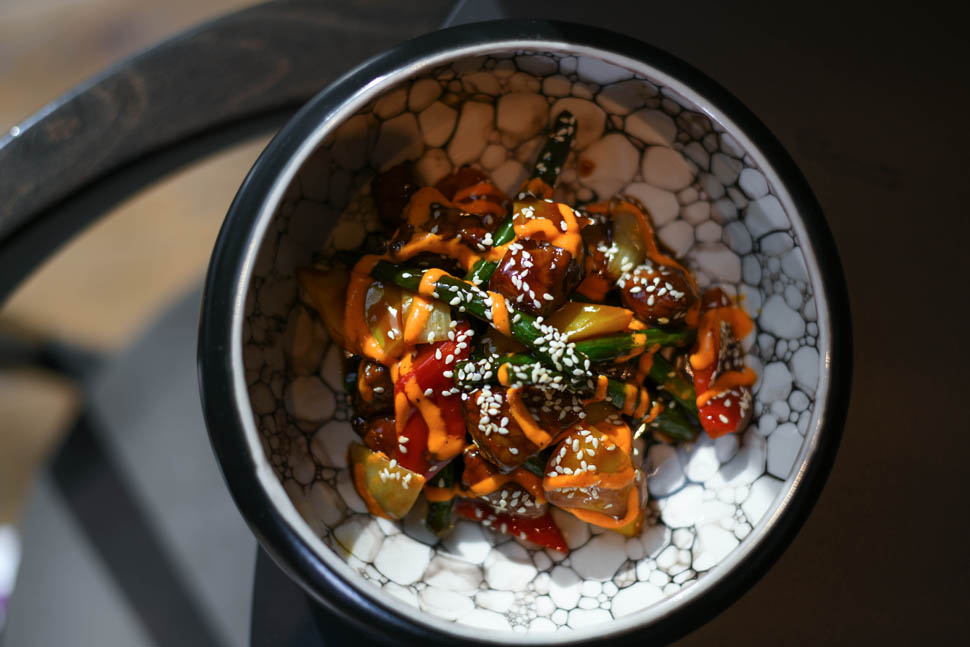
Soups are not lacking (the traditional hot and spicy tofu, mushroom, shrimp, bamboo, and egg soup, and the corn soup emulsified with shellfish broth served with king crab wonton and corn), nor are vegetable side dishes, including Kong xin cai (Morning Glory, also known as "Chinese spinach," "water spinach," or "heartless vegetables" sautéed with garlic and fresh jalapeño), Sichuan-style eggplants (braised with meat, hoisin sauce, and fresh chili), French beans (sautéed with garlic, yellow soybean paste, and fresh jalapeño), and "wood ear" mushrooms (sautéed with garlic, chili, and scallions).
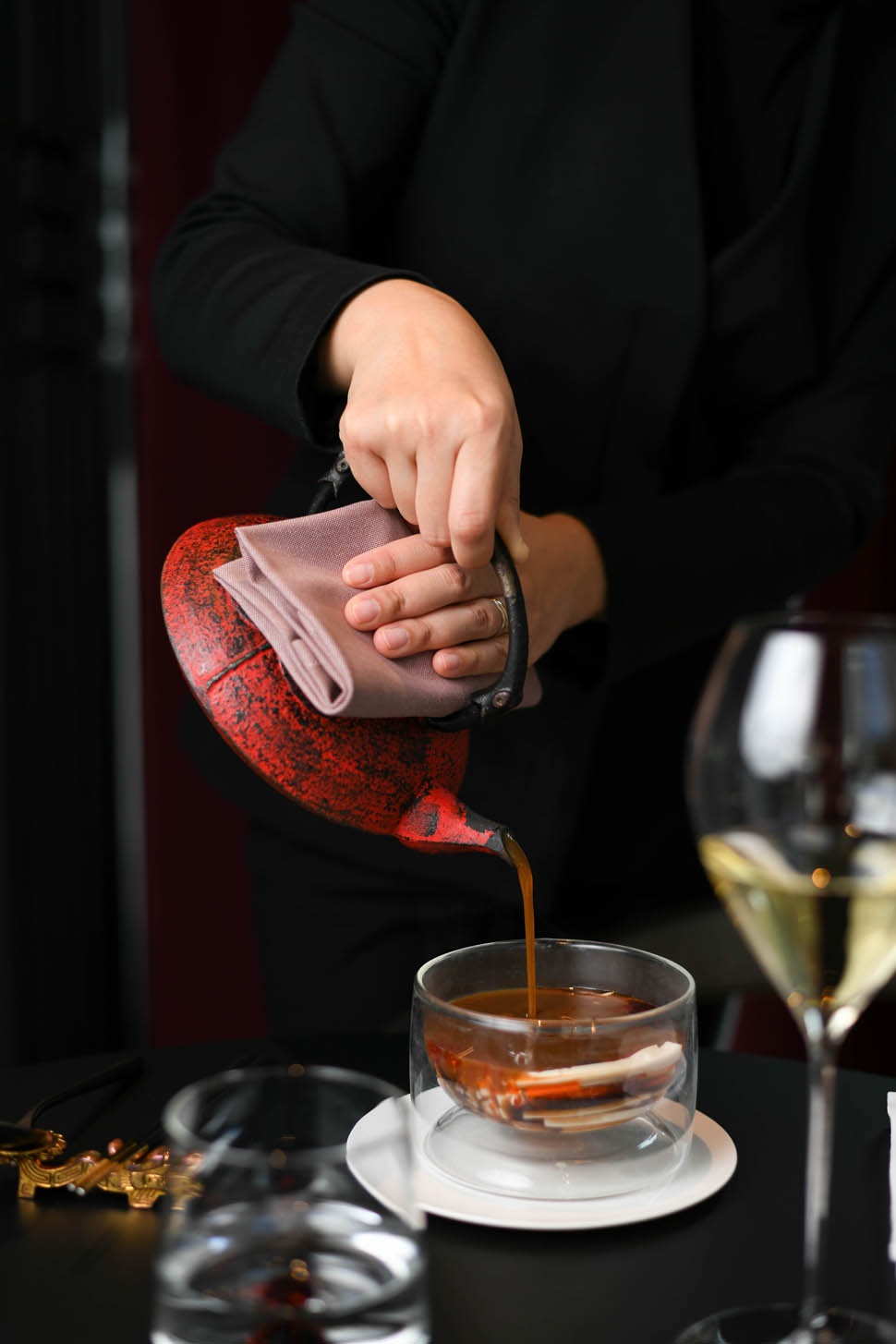
To conclude, desserts range from Strawberry Fior (with bergamot sour cream, citrus cream, elderflower, date biscuit, strawberry sorbet, and honey) to Tropical cheesecake (mango and passion fruit mousse, oat and peanut granola, marzipan ice cream, pistachio sponge, milk cream, and honey), to more enticingly named desserts like Sotto la campana (coffee-flavored with rum, chocolate sauce, mascarpone foam, cocoa crumb, coffee ice cream, scorched sauce, and chocolate crumble) and Salto in Fiera (a balloon with hazelnut praline cream, crispy cereals, gianduia ganache, hazelnut soil, sandblasted hazelnuts, caramel sauce, and popcorn ice cream).
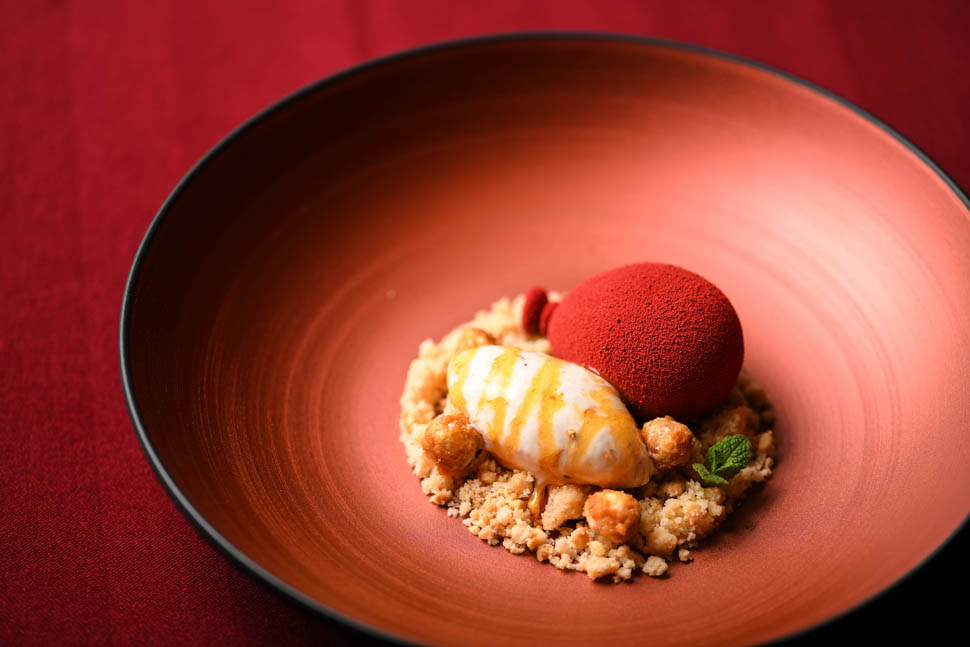
The Peking Duck, Queen of the menu
Ba Restaurant keeps the ritual of the true Peking Duck alive, a dish with a millennium-old history iconic in Chinese culture and the most famous dish in the capital. Here, it is prepared in the most traditional way (marinating, glazing, and wood-fired oven cooking), with a simple but lengthy process (it's available by reservation with 3 days' notice), necessary to achieve tender, flavorful, and succulent meat enveloped in shiny, crispy skin representing the noblest part of the dish.
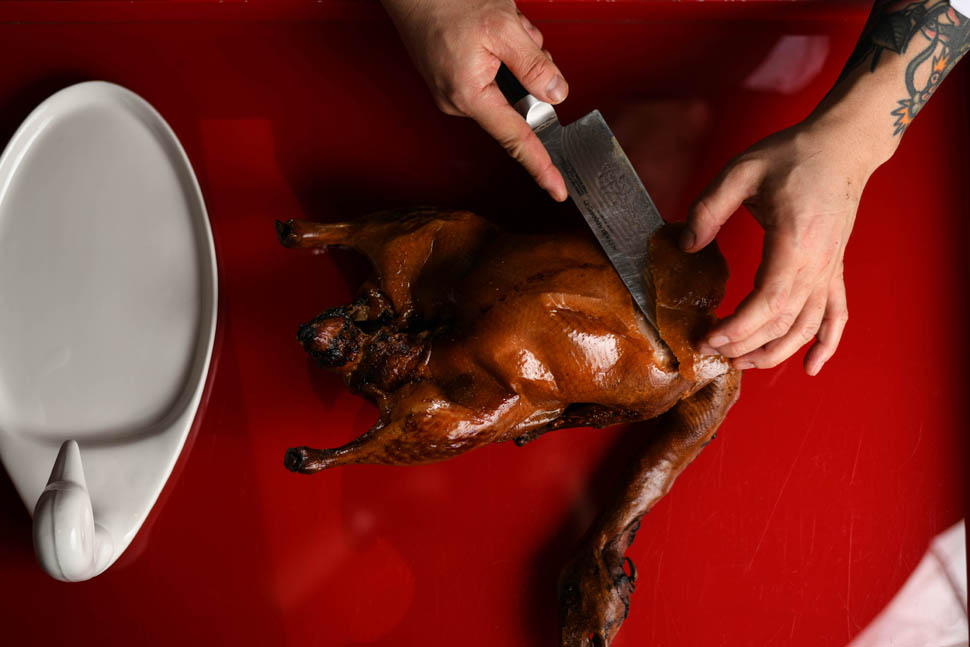
Table service is a true ritual: the duck is presented whole to the guests (including neck and head), just out of the 200°C oven, and then sliced in the kitchen and served in fillets at the right temperature, carved from breast, back, and thigh, accompanied by thin pancakes, julienned vegetables (spring onion, carrot, and cucumber), and orange hoisin sauce (a thick and fragrant sauce made from fermented soy, sweet and salty in flavor, typical of Chinese cuisine).
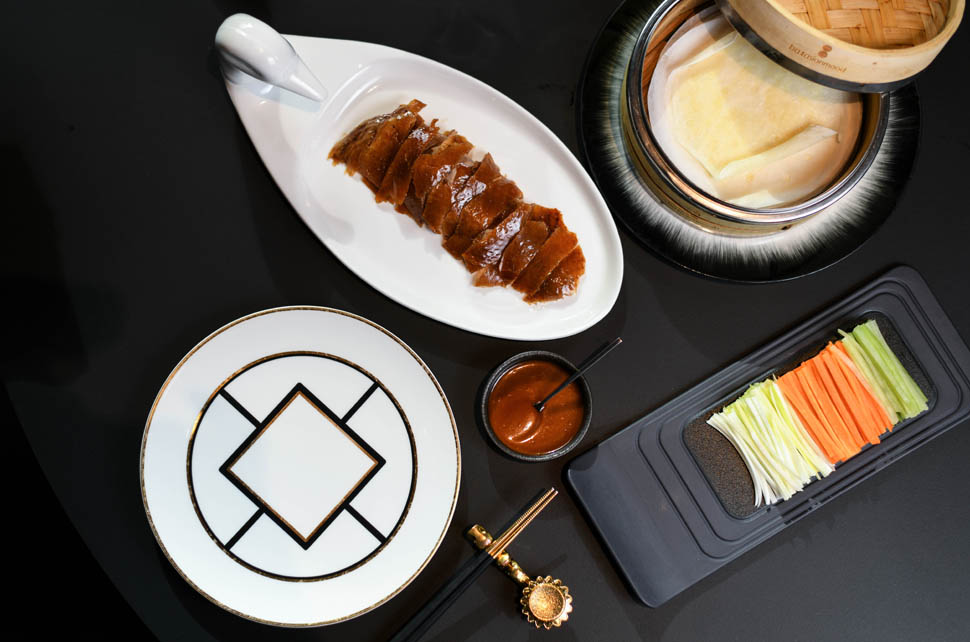
Pairing: from the Cellar to the Tea Pot
Ba's offering is completed with a cellar of over 650 labels, where (since 2016) sommelier Marco Spini's task is to find the right pairing for the dishes on the menu, creating a game of combinations that meld the variety of flavors in Chinese cuisine with the Italian wine culture, in a perfect balance that turns the dining experience into an extension of the kitchen, also based on research and experimentation to create a constantly new gastronomic experience.
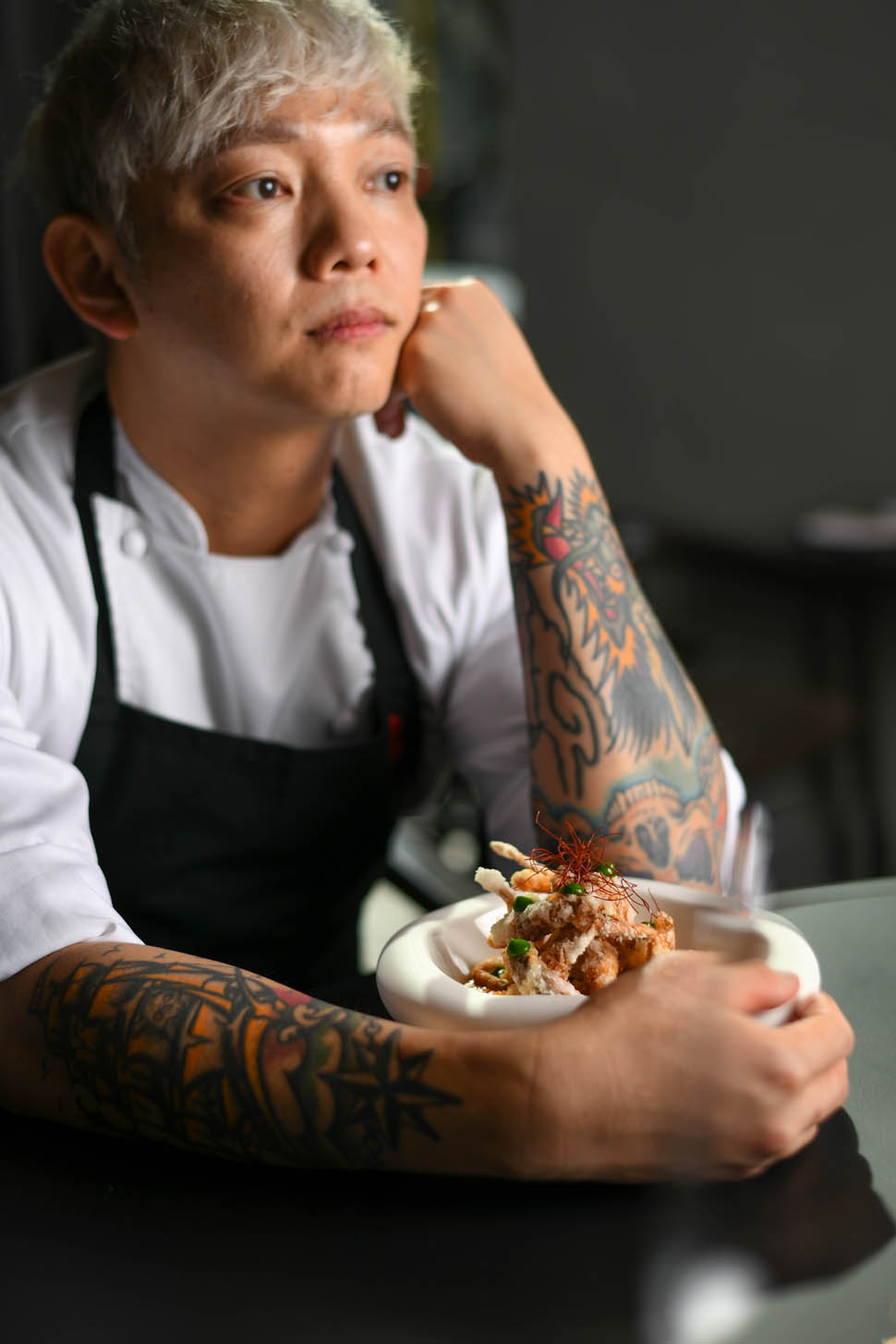
In addition to a selection of Italian, French, and German wines, sourced from renowned vineyards and wineries as well as lesser-known denominations and small artisanal productions, but all characterized by common elegance, cleanliness, and strong personality (such as Burgundy Pinot Noir, with its intense and complex bouquet, medium structure, notes of spices, black pepper, and small red berries, as well as good freshness and acidity, traditionally paired with the savory and aromatic Peking duck meat), there is also a selection of Chinese craft beers and spirits, such as the iconic Moutai (known as the "spirit of emperors," made from locally sourced wheat and sorghum and aged in terracotta jars before being packaged in precious ceramic bottles), Fenjiu (the oldest Chinese spirit, considered the ancestor of all Baijiu, produced in the Shanxi region in northern China by double distillation of local sorghum, barley, and peas and aging in terracotta jars), and Wuliangye (handed down since the Ming dynasty and produced for over 500 years by distilling sorghum, rice, glutinous rice, wheat, and corn, with a persistent aroma and a soft taste).
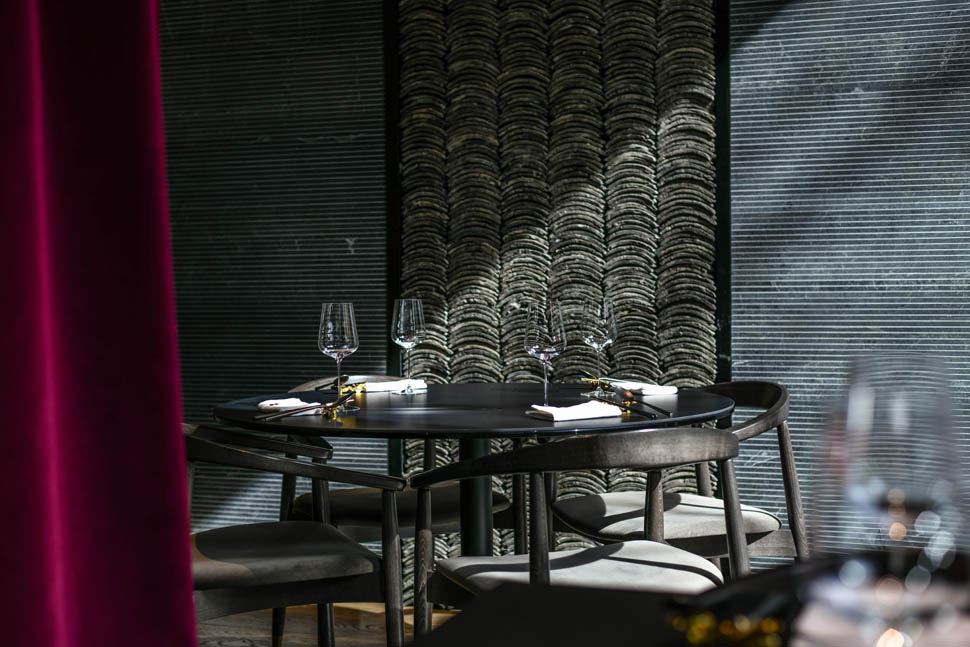
As tradition dictates, the beverage menu also includes pairings with green, black, red, and white teas, each with its own structure and aromatic characterization that make it suitable for specific types of dishes: from Emperor Dream, a soft green tea with notes of fruit and roasting, recommended with light and delicately flavored dishes, to Kukicha, more herbaceous and vegetal, savory and astringent, which pairs well with seafood or savory vegetable dishes, from Special Jasmine and Little Sweet Peach, delicately scented and perfect with all Dim Sum, to the more versatile Bai Hao Wulong, Pu’Er: Kunming, and Black Darjeeling: Singell SF, which, thanks to their complex structure and wide and persistent aromatic bouquet of fruit, flowers, wood, undergrowth, and leather, pair well with a wide range of dishes, from those based on mushrooms, truffles, fish, or meat to chocolate, fruit, and creamy desserts.
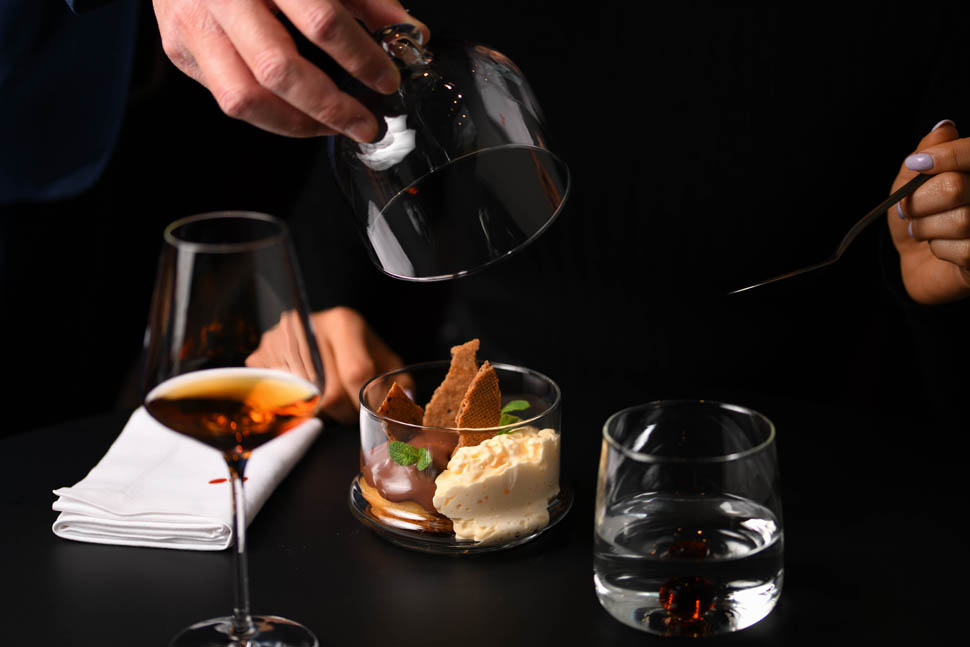
A Venue of Contrasts, Reflecting the Culinary Vision
Ba's dual nature, a high-profile urban restaurant that is both traditional and innovative, with cuisine faithful to the origins of the most authentic China but adapted in a contemporary way and open to Western influences, is also reflected in its interior spaces. The restaurant, the result of a project by the Naos Design architecture studio completed in 2019, expresses a strong identity, characterized by contrasts: red and black are the colors that run through it from the outside, with large darkened windows adorned only with Ba's logo depicting two crimson circles.
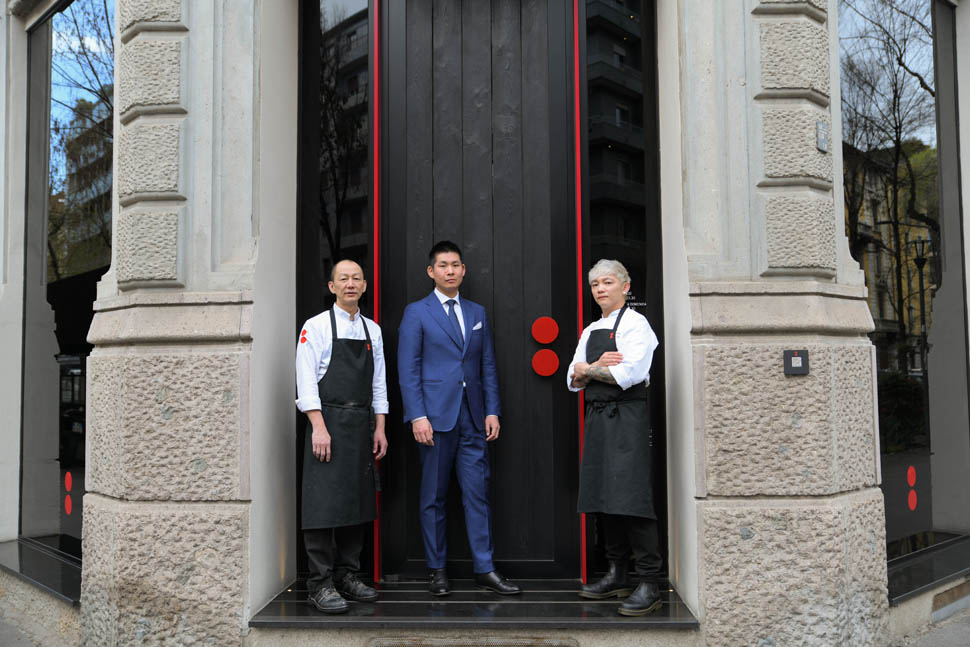
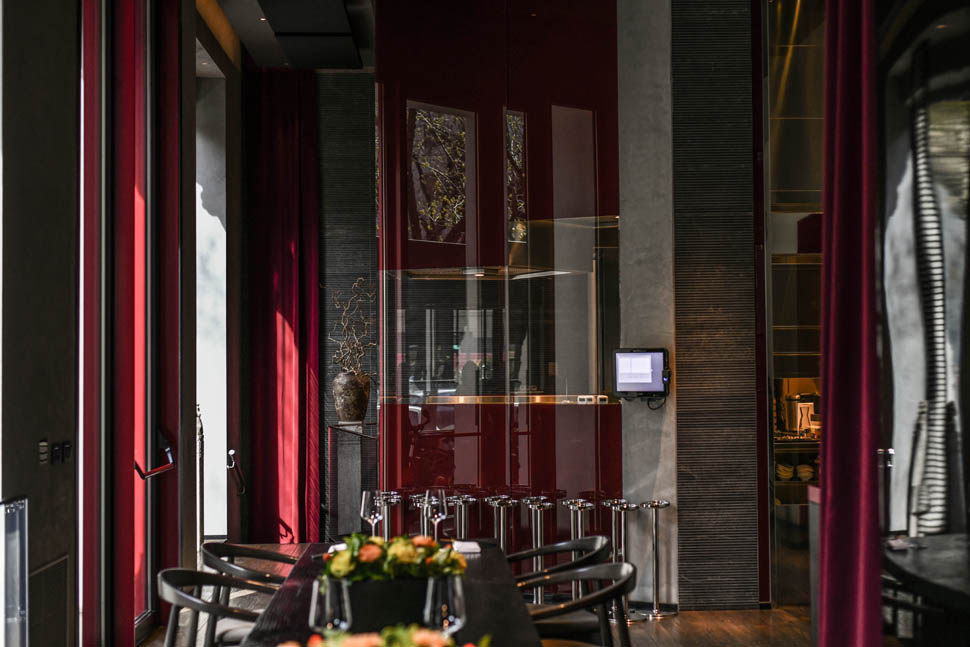
Inside, the same colors characterize the open kitchen and the elegant and minimal dining room, enriched by artisanal (sometimes humble) objects found directly in China and inspired by Eastern symbolism (vases, amphorae, Shishi lions once temple guardians and modern artist statues depicting Tai-Chi movements). Everything is in line with the concept of "handmade luxury," but also with an idea of eternity and antiquity made contemporary: from tiles with over a century of history, used as a covering for raw concrete walls, to statues made from common stones, to cedar tables, black and glossy, treated with the Japanese Shou Sugi Ban technique where wood is burned and then resin-coated to preserve it over time. Everything becomes the backdrop against which the dishes appear as paintings, artistic compositions, evidence of an idea of beauty, balance, and harmony constantly renewed.
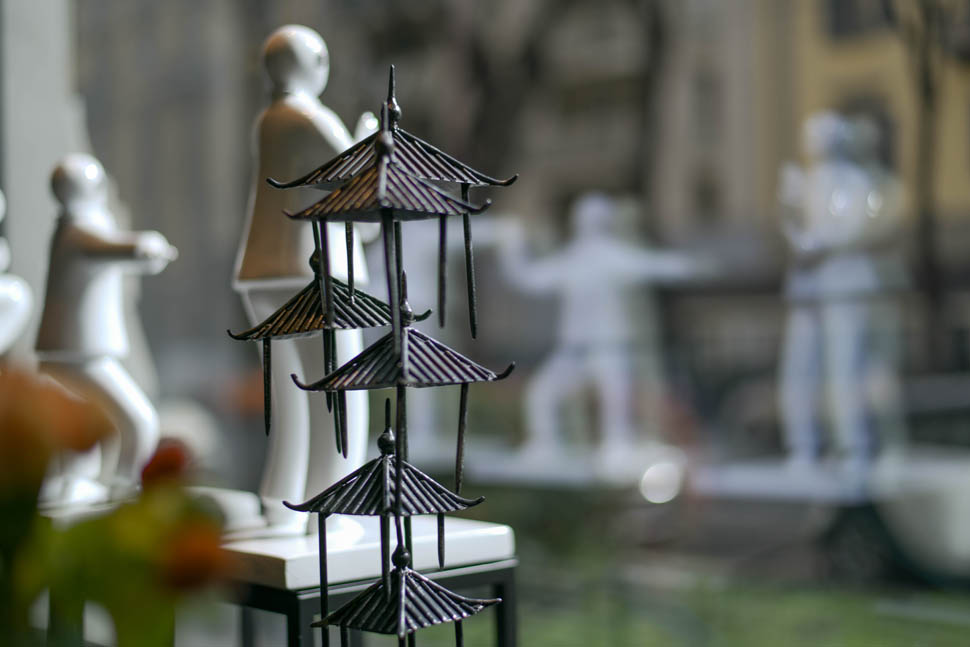
Address
Ba Restaurant
Via Raffaello Sanzio 22- 20149 Milan
Tel: +39 02 46 93 206
